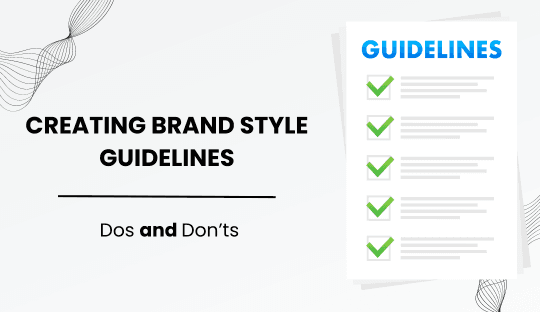
Creating Brand Style Guidelines: Dos and Don’ts
Creating brand style guidelines is a critical step in establishing and maintaining a strong visual identity and brand personality. For Flykez CO, a creative brand company in North Macedonia, these guidelines ensure consistency across all platforms and communication channels. This article provides a comprehensive overview of the dos and don’ts in creating effective brand style guidelines.
The Dos of Creating Brand Style Guidelines
1. Do Define Your Brand’s Core Identity
Start by clearly defining your brand’s core identity. This includes your brand’s mission, vision, and values. These elements form the foundation of your brand style guide and should be communicated consistently across all touchpoints.
2. Do Establish Clear Logo Usage Rules
Your logo is a key element of your visual identity. Establish clear guidelines on how your logo should be used, including size specifications, color variations, and placement rules. Ensure that your logo is used consistently to enhance brand recognition.
3. Do Specify Your Brand Colors
Define your brand colors with precise color codes (RGB, CMYK, Hex). Consistent use of brand colors helps in creating a cohesive visual identity. Include primary and secondary color palettes and specify when and where each color should be used.
4. Do Include Typography Guidelines
Typography plays a significant role in your brand’s visual identity. Specify the fonts to be used, including their sizes, weights, and styles. Consistent use of typography helps in creating a professional and unified brand appearance. Also Read About Future-Proof Your Brand with Robust Style Guidelines
5. Do Outline Image and Graphics Standards
Include guidelines for using images and graphics. This should cover the style of photography, illustration types, and any specific visual elements that align with your brand. High-quality and consistent visuals contribute to a strong brand identity.
6. Do Define Your Brand’s Voice and Tone
Your brand’s voice and tone are integral parts of your brand personality. Define how your brand communicates with its audience, including language style, tone (formal, casual, friendly, etc.), and key messaging points. Consistent communication builds trust and recognition.
7. Do Provide Examples
Include examples of both correct and incorrect usage of brand elements. Visual examples help ensure that everyone understands how to apply the guidelines correctly, reducing the risk of inconsistent branding.
The Don’ts of Creating Brand Style Guidelines
1. Don’t Be Overly Restrictive
While consistency is key, being too restrictive can stifle creativity. Allow some flexibility within your guidelines to adapt to different contexts and platforms. This approach encourages innovation while maintaining brand integrity.
2. Don’t Ignore Digital Platforms
Ensure that your guidelines cover digital platforms, including social media, websites, and digital advertising. Digital branding requires specific considerations, such as responsive design and social media post formats, to maintain consistency across all digital touchpoints.
3. Don’t Overlook the Importance of Accessibility
Accessibility should be a crucial part of your brand guidelines. Ensure that your brand’s visuals and content are accessible to all users, including those with disabilities. This includes considerations for color contrast, readable fonts, and alt text for images.
4. Don’t Forget to Update Your Guidelines
Brand style guidelines are not static documents. Regularly review and update your guidelines to reflect changes in your brand strategy, market trends, and technological advancements. Keeping your guidelines current ensures they remain relevant and effective.
5. Don’t Exclude Stakeholder Input
Involve key stakeholders, including marketing, design, and management teams, in the creation of your brand style guidelines. Their input ensures that the guidelines are practical and comprehensive, addressing the needs of all departments.
6. Don’t Neglect Training
Provide training for your team on how to use the brand style guidelines. This ensures that everyone understands and adheres to the guidelines, leading to more consistent and effective branding efforts.
7. Don’t Ignore Feedback
Encourage feedback from your team on the usability of the brand style guidelines. This feedback can provide valuable insights into areas that may need clarification or improvement, ensuring the guidelines are user-friendly and effective.
Conclusion
Creating comprehensive and effective brand style guidelines is essential for maintaining a strong and consistent brand identity. For Flykez CO, focusing on both the dos and don’ts will ensure that the brand communicates its values and personality effectively across all platforms. By following these expert insights, Flykez CO can create a cohesive and professional brand presence that resonates with its audience and supports its business goals.
For more information on how Flykez CO can help with your rebranding needs, visit www.flykez.com.
